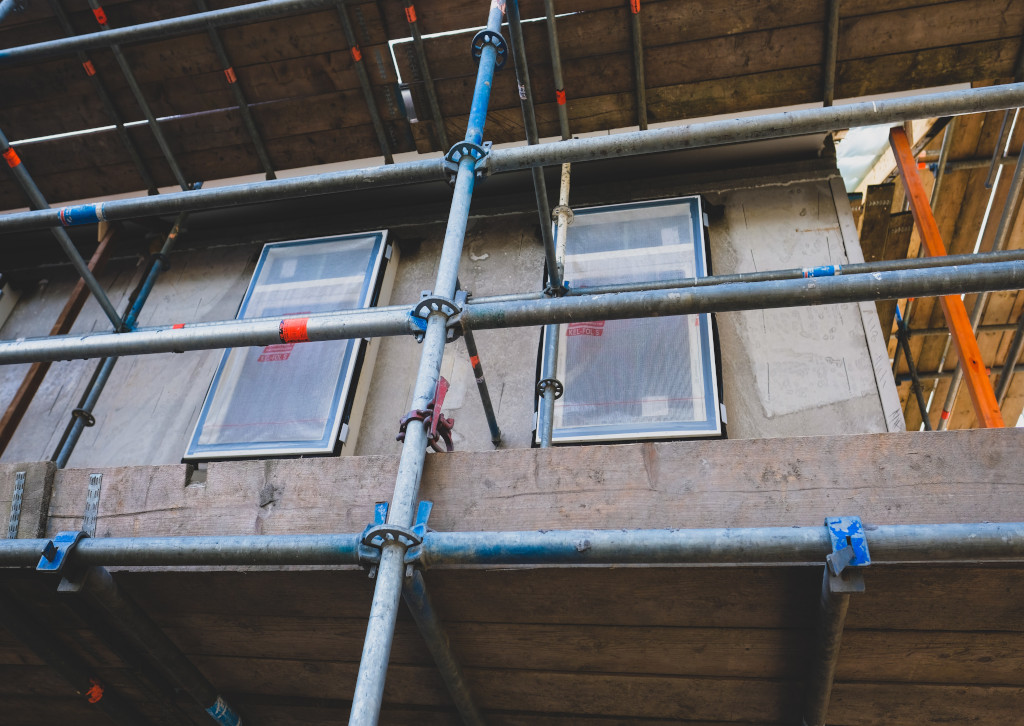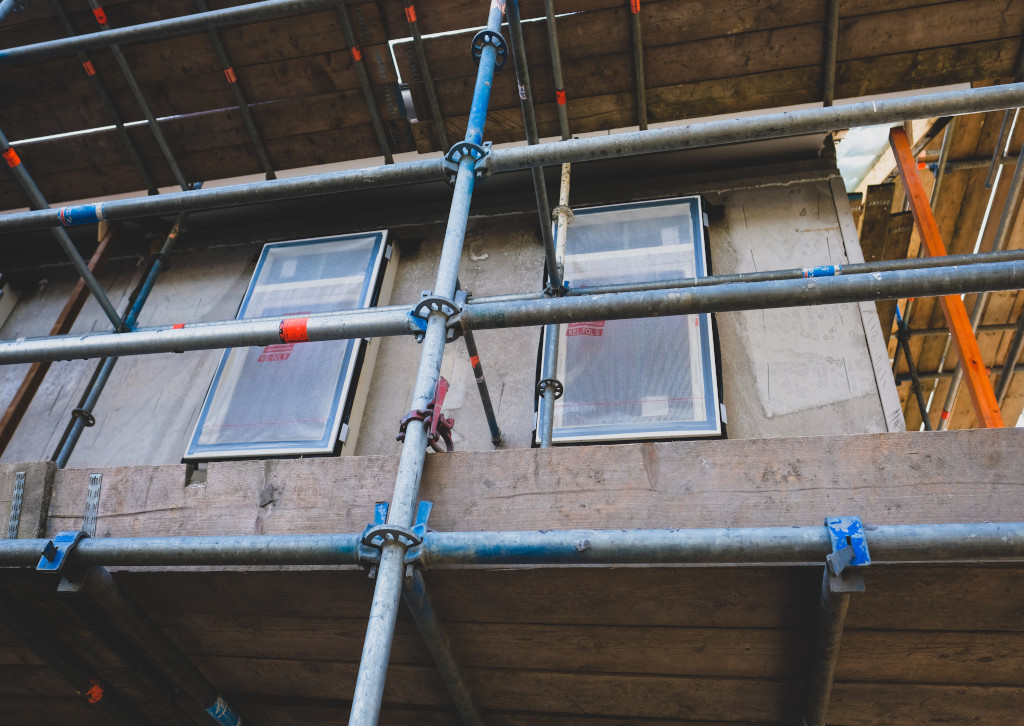Taking on a commercial construction project requires more expertise than conducting residential construction projects. Different factors include zoning laws, building codes, budgeting, etc.

Commercial General Contractors Oklahoma City can help streamline projects and find opportunities to save money by using alternative materials. They also know which permits are necessary for the project.
Commercial general contractors must work well with subcontractors in order to complete construction projects on time and within budget. This is a give-and-take relationship that benefits both parties. For example, subcontractors fill in labor shortages and provide specialized skills that can help a general contractor deliver a quality project for the client. General contractors, in turn, should treat their subcontractors with respect and value their contributions to a project’s success.
A good commercial general contractor has a network of quality, reliable subcontractors they work with regularly. This is important because it can save money by allowing them to get the job done with minimal hassle. A reputable GC will also keep track of their subcontractors’ performance on previous jobs to ensure they are doing a good job. They will also ensure their subcontractors are meeting the project specifications and deadlines.
In addition to their work performance, a good GC will monitor the subcontractors’ financial stability. They will do this by requesting information on the subcontractor’s safety record, finances, bonding capabilities, litigation history, insurance coverage and relevant work history. A GC will also check if their subcontractors have been paid promptly and haven’t exceeded the scope of their contracts.
One of the key elements to good subcontractor management is making sure that all of the important details are communicated in writing. This includes things like payment terms, delivery schedules, quality assurance measures and change orders. The best way to do this is by communicating with the subcontractors regularly. This can be done through face-to-face meetings, phone calls or emails.
Professionals who are familiar with subcontractor management understand the importance of getting all of these issues in writing, as verbal agreements can easily be forgotten. Moreover, these agreements may not hold up in court as well as written ones.
Lastly, it is important for commercial general contractors to have a plan in place for any unexpected events that may arise during the construction process. This can include things like weather or equipment failures. For this reason, a good GC will have an emergency fund in place to cover these costs. They will also have relationships with suppliers and vendors to help them get the supplies they need at cost-effective prices. This can be done through a variety of methods including researching potential partners, discussing pricespayment termsdelivery timescalesquality assurance measures and offering incentives to build a lasting partnership.
They Perform Quality Assurance Inspections
Commercial general contractors often run their own business, hiring subcontractors to complete specialized construction work. They may hire plumbing, electrical and carpeting specialists, masons and iron workers, or other significant roles that require a significant amount of experience and perhaps specialized credentials. They also perform a variety of quality inspections on their project sites. They have a number of different internal quality assurance inspections they perform regularly, but they also frequently have external health and safety inspectors come out to the job site to complete their own inspections.
Internal quality assurance (QC) inspections are an important part of the process because they check for any lingering problems with building standards and if the work being done is in line with the project specifications. However, QC inspections alone are not enough to ensure quality work, which comes from daily procedures performed by the workers on your construction projects. This is where commercial general contractors come in to help with the implementation and monitoring of these procedures.
They have a deep professional network of subcontractors and vendors with whom they have built relationships over time. As such, they can purchase necessary materials at discounted rates. This enables them to help their clients stay within their construction budget and meet their desired completion dates.
Additionally, they can also assist with the scheduling of subcontractors and other workers by leveraging their extensive professional relationships. This is especially important when working on projects that have to adhere to strict timelines and deadlines such as building additions or remodeling workplaces for businesses.
They can also assist with obtaining and coordinating the necessary permits for the project from local government offices. This is important because it enables them to avoid costly delays caused by having the wrong licenses or documentation for the project, which can be extremely expensive. This is one of the reasons that it’s important for companies to hire commercial general contractors that have a strong track record with local government agencies and are fully licensed and insured. This will give them peace of mind and confidence that the contractor is capable of meeting all their requirements for a project.
They Manage Permits and Building Codes
Commercial general contractors are highly knowledgeable about building codes and permits regulations, ensuring that all stakeholders follow proper compliance standards. This protects the reputation of your project and ensures that it can be used for its intended purposes for years to come.
They also know which permits will be needed for the different phases of your construction project. This saves you time because you don’t have to worry about the research that goes into figuring out which permits are required for your construction or remodeling project. In addition, they handle obtaining these permits and make sure that all necessary inspections are scheduled.
Having worked on countless construction projects, they understand the unique nuances of each one. This means they can provide you with helpful advice about what materials and equipment are best suited to your specific needs. They can also assist you in finding reputable suppliers that offer discounts on products and laborers. This way, you can get high-quality materials and workers at an affordable rate.
In addition, commercial general contractors can help you secure the necessary financial resources for your construction project. They can even help you obtain a loan from a bank to cover the cost of materials and other expenses. Additionally, they can help you establish a timeline and schedule for completion of the project. This can keep you from becoming overwhelmed and ensure that the project is completed on time.
When working on a large construction project, it’s easy to lose track of your responsibilities and neglect important tasks. As a commercial general contractor, you can ensure that the project stays on schedule and completes all work to your client’s satisfaction. Moreover, you can answer any questions or concerns your clients might have about the project and how it is progressing.
Additionally, a commercial general contractor can also act as a liaison between the architect and the general contractor. This is particularly true if you are using a design-build delivery method. In such cases, the GC is responsible for managing both the design and construction processes and oversees the entire project.
They Perform Final Walk-Through
A final walk-through is a critical step in the building process. It’s a chance for clients to see the finished product, and to make sure that all the details have been addressed. It’s also a time to answer any questions that the client may have.
Whether you’re buying a home or completing commercial construction, it’s important to attend a final walk-through. The last thing you want to do is sign on the dotted line and then discover that there’s a major problem with the house after you move in.
The final walk-through is especially important for new construction. If the building is being sold as-is, a GC will likely generate what’s known as a “punch list,” which includes every little detail that needs to be addressed before a final walk-through can occur. These items can include everything from outlets that don’t work to drywall issues to appliance replacements. The GC will need to complete all items on the punch list before final payment can be released.
In addition to checking that the drywall and paint are done, a final walk-through can be an opportunity for clients to learn how to use smart appliances, thermostats, light fixtures and other features that are being installed in their new home or office. The GC can help them understand unique features and provide information about warranty coverage.
If the GC is still owed money by subcontractors or suppliers, they’ll need to collect final conditional or unconditional lien waivers from all of those vendors before a final walk-through can take place. This is a common requirement for many projects, and it’s something that the GC handles on behalf of their clients.
In addition to addressing any outstanding issues, the final walk-through is an opportunity for the GC to demonstrate that they’ve gone above and beyond for their clients. This is the ultimate way to earn their client’s trust and ensure that they’re satisfied with the results of their projects.





